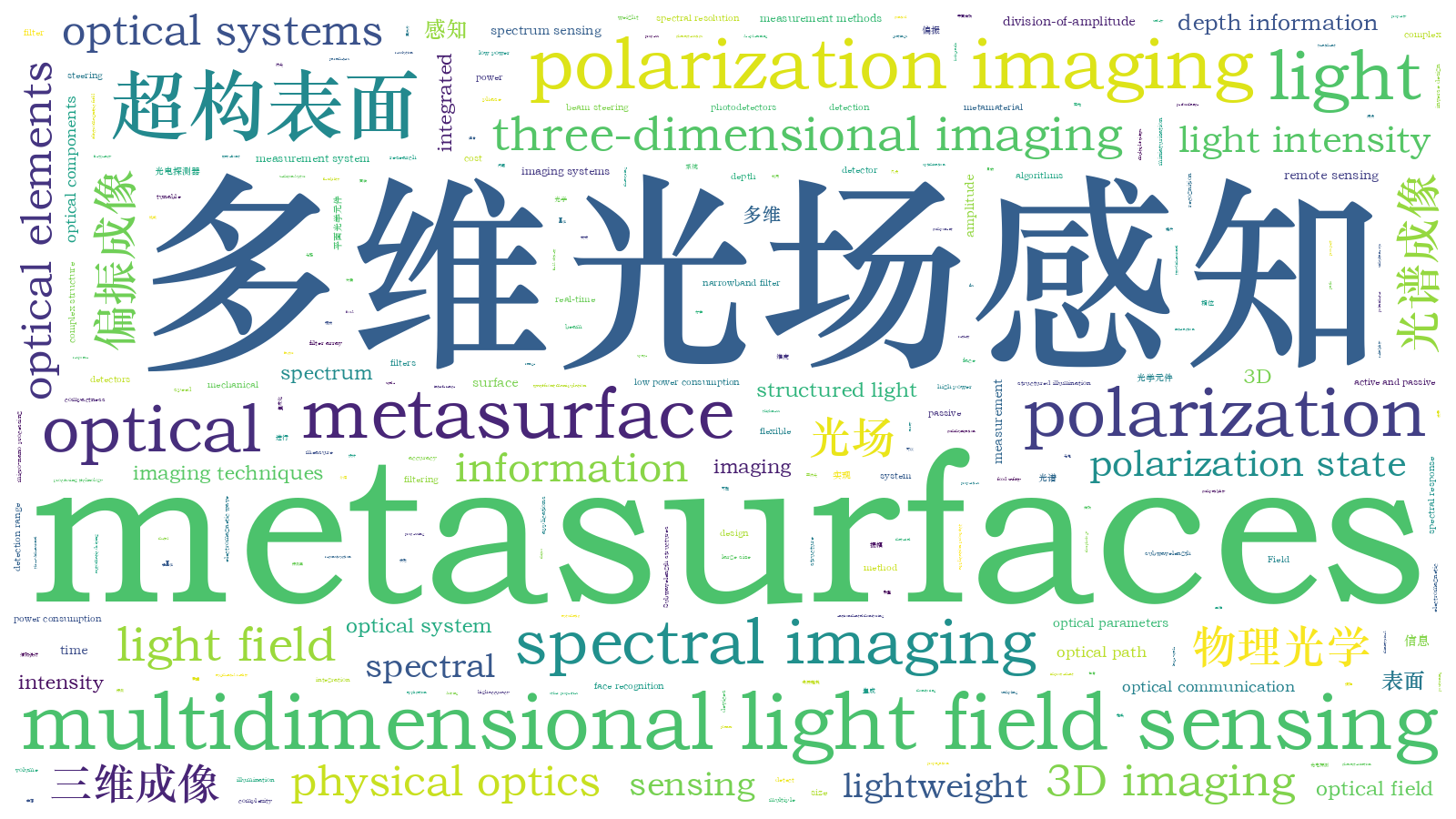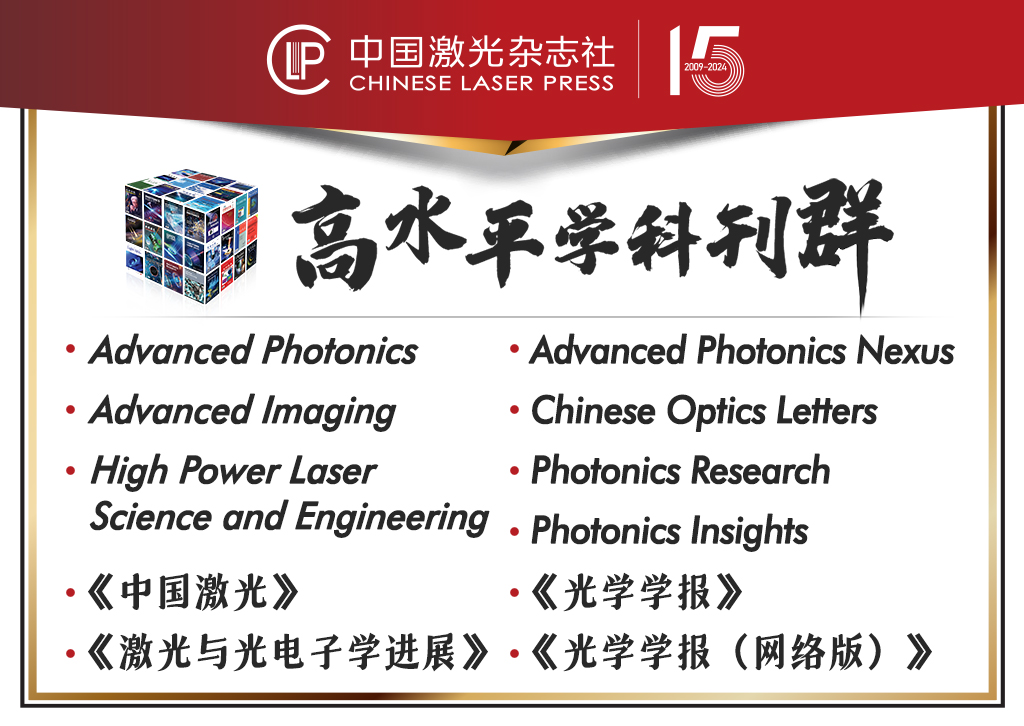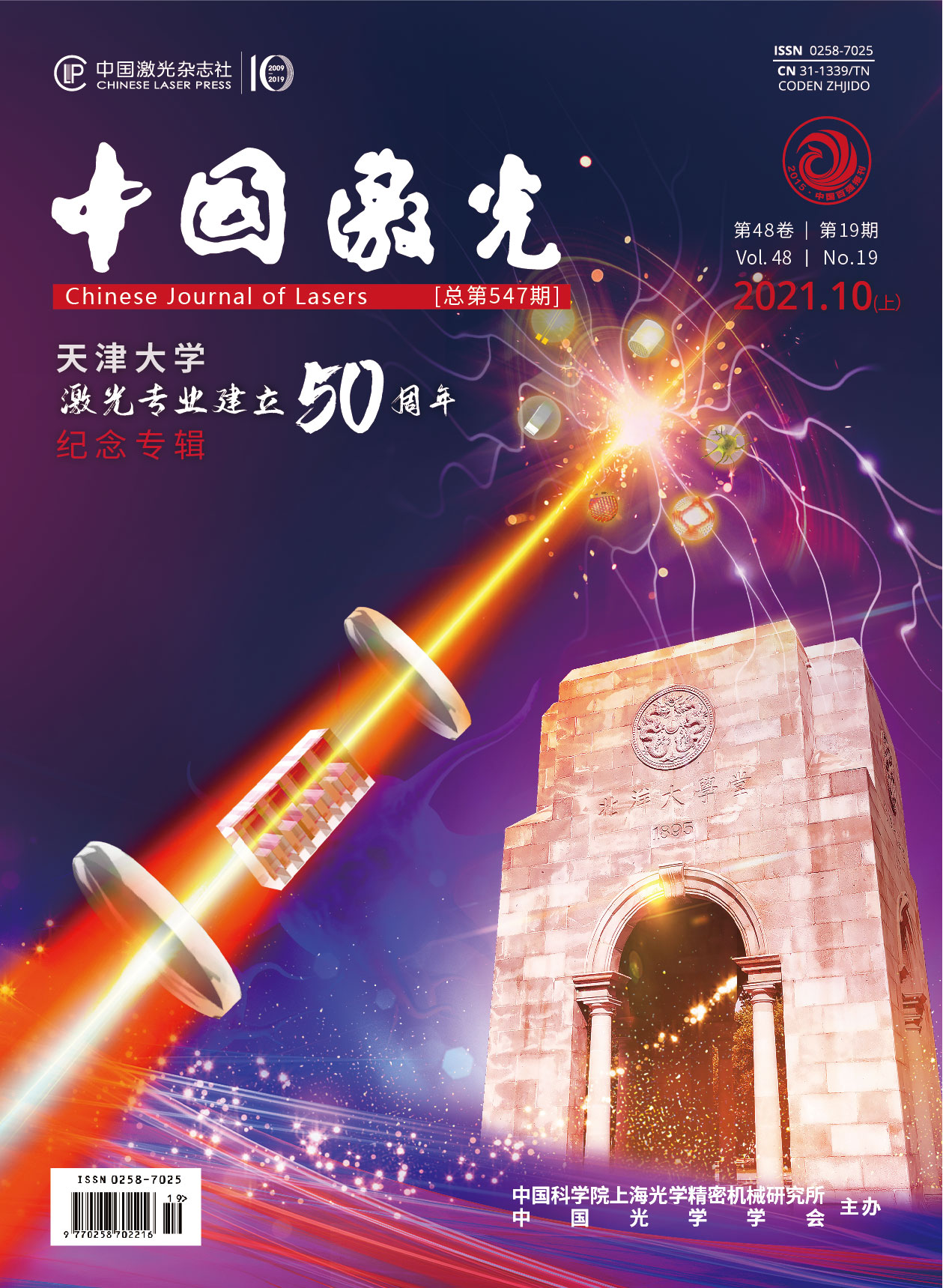基于超构表面的多维光场感知  下载: 2852次
下载: 2852次
光场包含了振幅、相位、光谱、偏振等多个维度的信息。传统光电探测器一般仅能感知二维光强信息,若想实现对光场其他维度信息的获取,需利用多个光学元件组合,故存在系统复杂、难以集成等问题。超构表面是一种亚波长尺度的新型平面光学元件。通过灵活的平面结构设计,超构表面可以对光场的振幅、相位、光谱、偏振等多维信息进行调控,从而为轻量化、集成化多维光场感知系统的实现提供可能。详细介绍了国内外基于超构表面实现光谱、偏振、深度等多维光场信息感知的最新研究成果,并对目前超构表面在多维光场感知领域面临的挑战以及未来的发展趋势进行了展望。
Significance Light is an electromagnetic wave that carries information of multiple dimensions, such as intensity, phase, frequency, and polarization. The change in the intensity, spectrum, polarization, and other information as a result of the interaction between objects and the light field can reflect the material, morphology, and other characteristics of the objects. However, traditional photodetectors can only detect two-dimensional (2D) light intensity information. To perceive more dimensional optical field information, additional optical components and mechanical devices are required, which will result in issues such as the system’s large volume and complex structure. Many applications today, such as three-dimensional (3D) face recognition, automatic driving, and remote sensing, have an urgent need for miniaturization and lightweight optical systems, presenting a significant opportunity for the development of integrated optical field sensing systems.
A spectrum is a valuable tool for object characterization and analysis, and it is widely used in food safety, environmental monitoring, biological imaging, archaeological exploration, and other fields. Traditional dispersive and interference spectrometers can provide ultra-fine spectral resolution as well as an ultra-wide spectral detection range. Traditional spectrometers, however, have limitations in situations where real-time spectral detection is required due to the presence of optical and mechanical moving parts with large volumes and weight. People anticipate that in the future, spectral sensing devices will be reduced to centimeters or even millimeters in size and will be integrated into smartphones, drones, and other microsystems.
The measurement of light’s polarization state is important in fields, such as remote sensing, medical treatment, and optical communication. Traditional polarization measurement methods are divided into two types: division-of-time and division-of-amplitude. Division-of-time polarimeters measure the intensity of various polarization components by positioning a set of rotating waveplates and polarizers in front of the detector. This method often relies on mechanical rotating structures, resulting in slow measurement speed and reliability. Polarizing beam splitters are used in division-of-amplitude polarimeters to separate different polarization components into different detectors. Both methods have problems, such as large volume and complex measurement system structure.
Many emerging technologies, such as autonomous vehicles, face recognition, robotics, and augmented reality, rely on 3D imaging techniques. There are two types of 3D imaging techniques: active and passive. Active methods typically necessitate structured illumination or scanning, which adds complexity, cost, and power consumption. Passive methods, which typically use multiple views, have limited accuracy and a high computation cost. 3D imaging techniques based on conventional optical elements are limited by high cost, large size, high power consumption, and complex systems for applications requiring compactness, integration, and portability.
Metasurfaces are novel planar optical elements that can control the light field by deploying subwavelength artificial antennas on the surface. Subwavelength structures of metasurfaces, unlike traditional optical elements, can interact with the incident electromagnetic field, causing abrupt changes in optical parameters on the surface and breaking traditional optical elements' dependence on the propagation optical path. Because of this property, metasurfaces can modulate the amplitude, phase, polarization, and other properties of the light field within the subwavelength thickness in a very flexible and powerful way. As a result, metasurfaces open up new avenues for the miniaturization and integration of spectrometers, polarimeters, and depth information perception (
Progress The ability of metasurfaces to flexibly regulate the spectrum opens up a new avenue for the realization of integrated spectrum sensing systems. Metasurface-based spectrometers are classified into two types based on their operating principles: narrowband filtering and computational spectrometers. Narrowband filtering spectrometers use a single tunable narrowband filter or narrowband filter array to achieve spectral sampling (Figs. 2--4). Computational spectrometers do not require narrowband filters. The spectral response of the filters can be wide and random, which makes designing narrowband filter metasurfaces much easier. Computational spectrometers can extract the original spectrum from obtained signals using algorithms (
In recent years, researchers have proposed several types of metasurface-based polarimeters, including division-of-amplitude (Figs. 6--8), division-of-time (
Metasurfaces’ flexible wavefront manipulation enables them to realize 3D imaging systems with a miniaturized form factor and improved performance, for both active and passive methods. Typical active 3D imaging techniques include the structured light method and the beam steering method. Structured illumination achieved by metasurfaces has a simplified optical system and a much larger field of view (
Conclusion and Prospects This paper introduces the sensing of multidimensional light fields, such as spectrum, polarization, and depth information using metasurfaces. Future research into the flexibility of metasurfaces, such as combining metasurface design and reconstruction algorithms with inverse design, end-to-end optimization, deep learning, and other computer technologies, is expected to result in a simultaneous perception of more dimensional light field information. With the in-depth understanding of metamaterial surface, the exploration of new metamaterial surface design, and the improvement of large-scale micro-nano processing technology, metasurface will have a bright application prospect in the field of lightweight integrated multidimensional light field perception.
倪一博, 闻顺, 沈子程, 杨原牧. 基于超构表面的多维光场感知[J]. 中国激光, 2021, 48(19): 1918003. Yibo Ni, Shun Wen, Zicheng Shen, Yuanmu Yang. Multidimensional Light Field Sensing Based on Metasurfaces[J]. Chinese Journal of Lasers, 2021, 48(19): 1918003.







